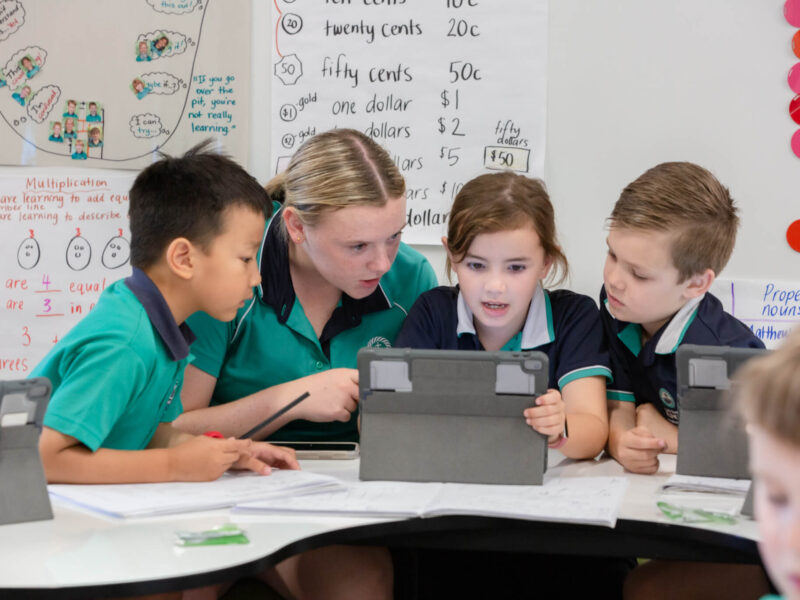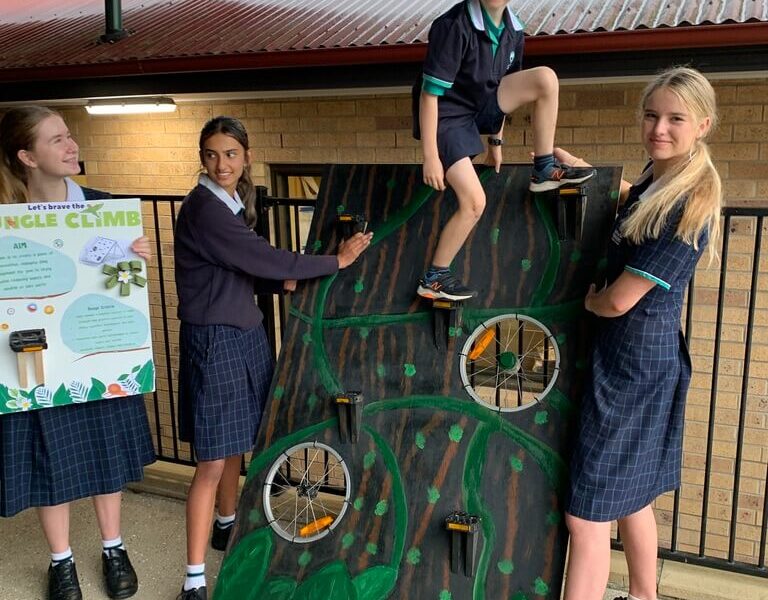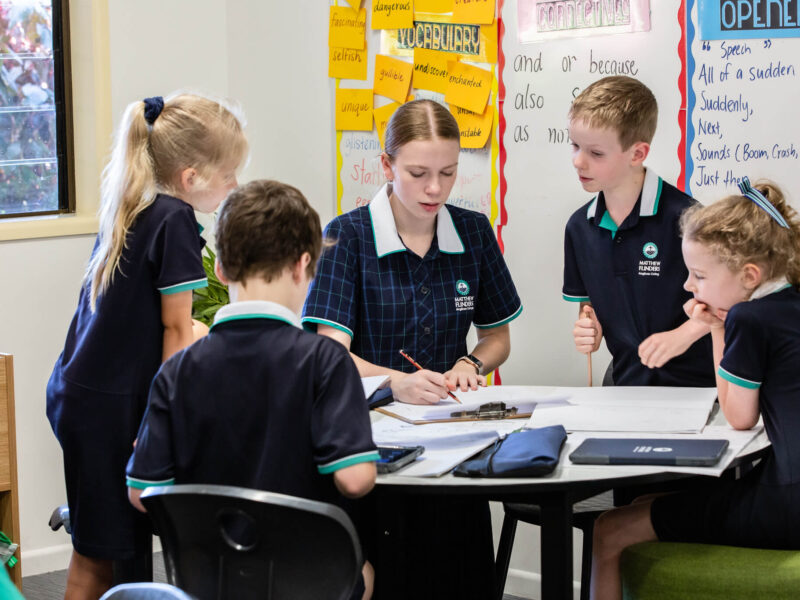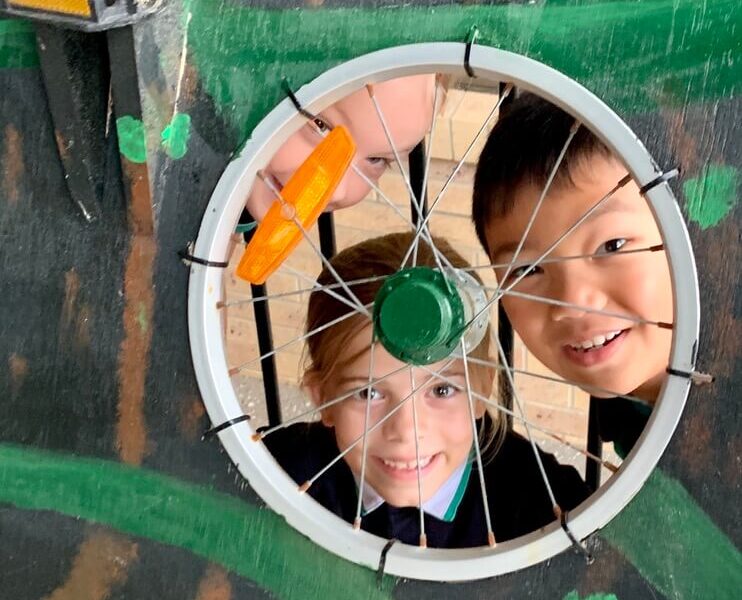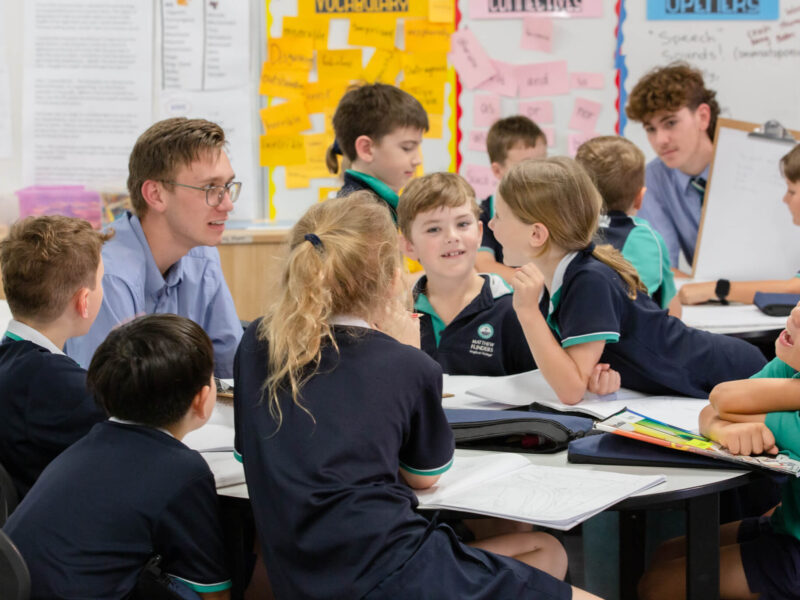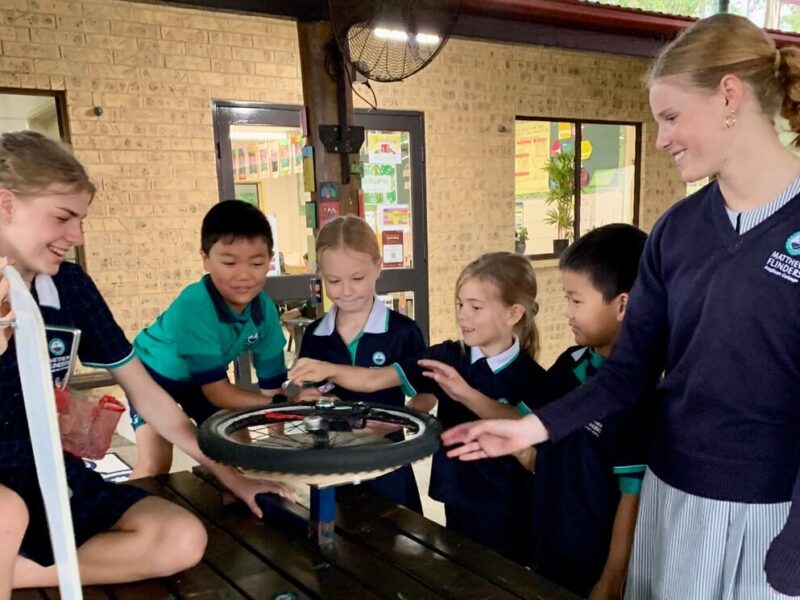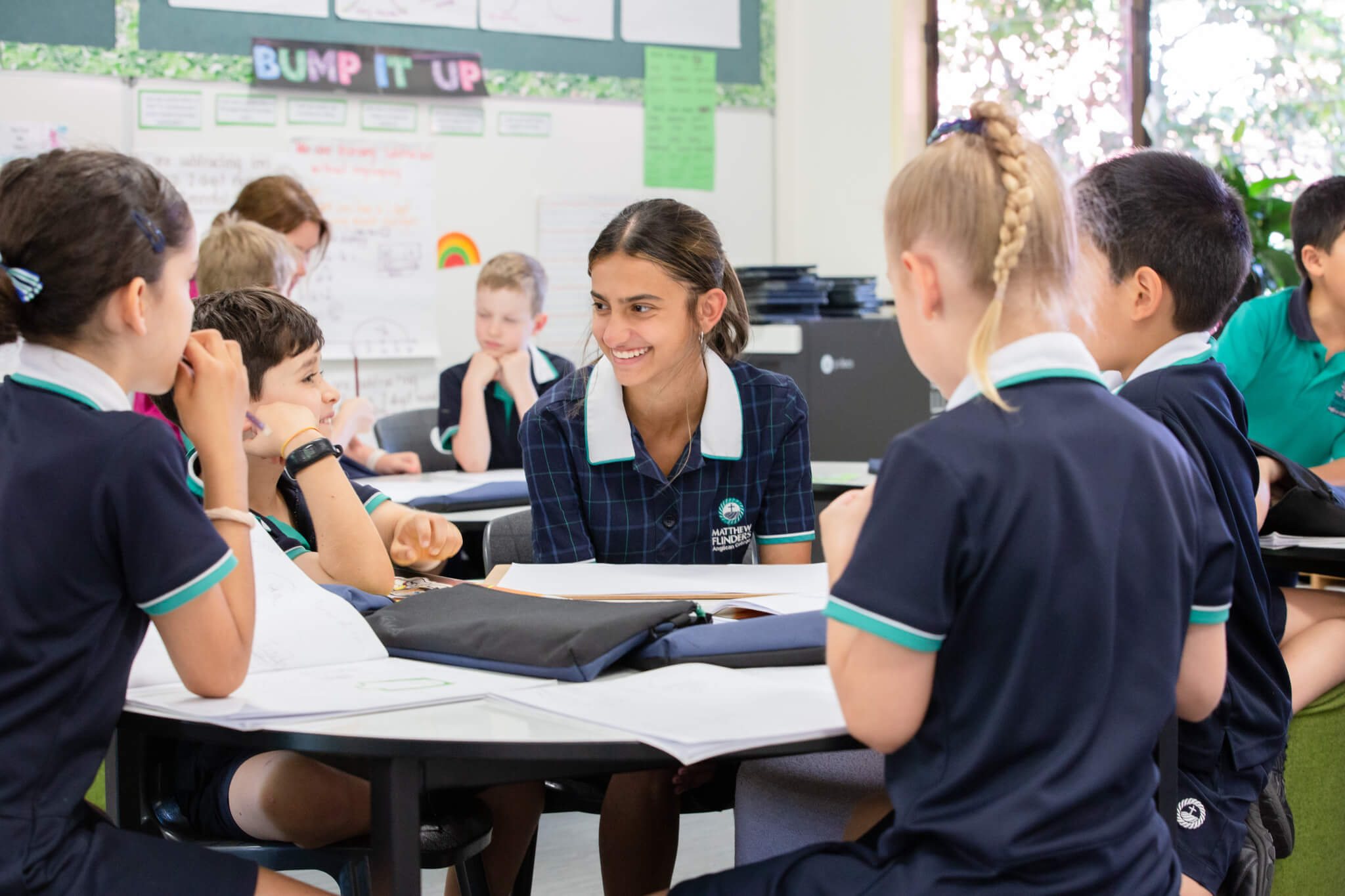Year 10 Design students from Matthew Flinders Anglican College have taken on the challenge of repurposing old bicycle, investigating sustainable practices for playground design.
The challenge encourages students to use design thinking approaches and human-centered design methodology, allowing them to ask critical questions about the issues shaping our world.
To understand the needs of their target market, the Year 10 students visited the Flinders Primary campus to interview students in Year 2 to find out what makes a ‘fun’ playground.
As part of their investigations, students also visited the newly-established Mooloolaba Foreshore Playground.
Students learned the elements that enabled children in the early years to have fun and improve physical, social and cognitive development through play.
For Flinders Design student Franco Joubert, meeting with the Year 2 students was an incredibly insightful experience.
“The Year 2 students highlighted the importance of creating an interactive playground and were very knowledgeable on a number of topics, including how to make our design more sustainable and how to make our design safer,” Franco said.
“One of the suggestions was to add a brake to the design to allow the user to better control their experience, which really informed our design,” he said.
The experience allowed the Year 10 students to modify their designs and gain an insight into the elements which students enjoyed the most, said Kiara Van De Ree.
“The class was as excited as we were to test our equipment, and their feedback came in the form of their participation in the process,” Kiara said.
“Students were lining up to take turns climbing on the equipment, with many lining up as many as eight or nine times to have another turn,” she said.
“It was great to see how much fun the equipment brought to students.”
Meeting with the Year 2 students was imperative to the design process, said Flinders student Tamsin Bradford, as it allowed a greater understanding of the features that students wanted to see in their new playground.
“The visit was extremely successful, allowing for the modifications suggested by the Year 2 students to be taken into consideration as part of our design process,” Tamsin said.
“The students were extremely confident and had a great influence on ideas we could incorporate to improve our designs, including an outdoor chill-out zone, attaching multiple pieces of the designed equipment allowing students to play together, playground pieces that could represent animals, elements that spin and sun-safe shades,” she said.
“Safety and usability were most important to the Year 2 students, and it was great to see the depth of understanding that students had of design and the ways in which they incorporated this into their suggested feedback.”
The meeting was a highlight of the design process for Year 10 Flinders student Gabrielle Proudfoot.
“Involving the Year 2 students gave us a chance to see our designs in action and how students would interact and engage with them,” Gabrielle said.
“Working with the students also gave us feedback on what worked and what didn't, for example, they particularly enjoyed that they were able to climb and use our prototype, which was a short climbing wall, but we noticed many wanted to sit at the top and take in the view, suggesting a small deck or platform at the top would create some extra fun,” she said.
“Overall, this experience has provided learning opportunities to understand sustainability and the principles of good design, as well as allowing us to explore the design process from start to finish.”
Year 10 design students will now use the feedback from the consultative process to refine their projects ahead of their final design pitch.
